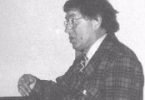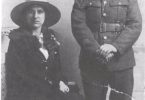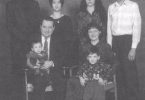I was born in Gillingham, Kent, England, in 1922, on a street called Toronto Street, and I think that was an omen. When I was two, we moved to Wrexham in Wales where I spent my infant years and started school and was actually taught some Welsh. However my father lost his job at the outset of the big Depression in 1929 and we moved back to Gillingham to live with my grandfather and another uncle.
When I was thirteen, I decided that what I wanted to do was join the Navy so in 1937, I sat the examination for entrance as an artificer apprentice. At the tender age of fifteen and one month, I joined the Navy and signed to stay until I was thirty.
Of course, in 1939, the war started, and although I was only halfway through my apprenticeship, we were subjected to the bombing which commenced in 1940, especially the ports of Portsmouth and Plymouth where I was stationed. In January of 1942, I joined an aircraft carrier and found myself in Colombo, Sri Lanka just in time for the Japanese fleet (the same one that bombed Pearl Harbour) to enter the Indian Ocean and endeavour to destroy the British fleet.
Fortunately, they were unsuccessful, the British fleet being saved by sharp-eyed Canadian pilot by the name of Flight-Lieutenant Birchall. He was able to warn the British of the Japanese fleet and the British evaded action. The Japanese eventually left the area and the ship I was on carried out routine convoy duties.
In October of 1942, we were made part of the American British Operation which landed in North Africa. After the Germans were defeated in North Africa, Sicily was invaded in 1943, and my ship was a part of that operation along with the follow-up landing on mainland Italy. We saw action at Salerno. We spent the next six months in operations in the Mediterranean and then went back to the UK for repairs.
The next action that I was involved in was the bombing of the German battleship Tirpitz. This was in cooperation with the first Canadian aircraft carrier, Nabob. And unknown to me, aboard the Nabob was the late Johnny Greenhough. The Nabob was torpedoed during this operation, causing the loss of about twenty-three lives. On discussing this with Johnny, I found that the Canadian crew managed to steam for one thousand miles back to Scotland with the ship being severely damaged, so much so that it never took part in any further actions.
After that I was transferred to HMS Diadem which was a light cruiser and we carried out several Russian convoys. And finally we took part in an operation against German destroyers near the Lofoten Islands in Norway. We arrived back in Scotland from there after the VE celebrations had taken place and we had missed all the fun.
After the war I stayed in the Navy until I was forty. During this time I did commissions in the Mediterranean, the Far East and saw most of Europe. After I left the Navy in 1962, my marriage started to break up and when one thinks about it, it is not surprising. My son and I calculated that out of twenty-three years of marriage, I had only been home for eight of those years. I divorced in 1967 and eventually found a job in Bermuda as an engineer in a hotel.
Lo and behold, in 1968, a certain lady came out there to look after the payroll for the same hotel. Frances and I were married in Bermuda in 1969. In September of 1969 we came to Canada. As Frances had already lived in Canada for ten years, we thought it was the best place to come to.
I eventually got my landed immigrant status and my first job was in Vancouver. I was a boiler and machinery inspector for an insurance company. After two years I was offered a promotion to move to Calgary which we did. I then carried out inspections in Alberta and one of the first jobs was to inspect the machinery in the mines in Canmore; this was in 1973. Eventually I moved into the insurance brokering business and was offered a job in Toronto. This suited us as we had purchased a cottage on Lake Muskoka in Ontario; Frances lived in the cottage all week and I worked in Toronto getting up to the cottage on Fridays and returning to Toronto early Monday mornings. I continued doing this until I retired in 1987 when I was sixty-five.
In 1989, after two years, we decided that living on the island wasn’t for us so we decided to move back west. I thought we were going to Calgary but Frances had decided on Canmore so here we are. We arrived in Canmore in March of 1990 and I must say we have both had a wonderful time ever since. Since arriving in Canmore I have taken part in a movie and a follow-up documentary which will be shown shortly in November, 1999. Also I took up watercolor painting in 1994 and have taken lessons from Donna Jo Massie ever since. I have been fortunate enough to sell some paintings. Two of them are presently showing in the hospital art display. I also help the duplicate bridge at the Senior Centre Mondays. I help hang pictures at the gallery as my involvement with CAAG.
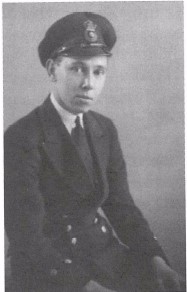
David Robinson aged 20, just promoted to Chief Petty Officer
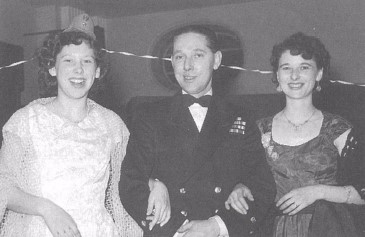
David Robinson with first wife June and daughter Joanne
In Canmore Seniors at the Summit, ed. Canmore Seniors Association, 2000, p. 246-248.


